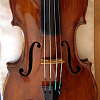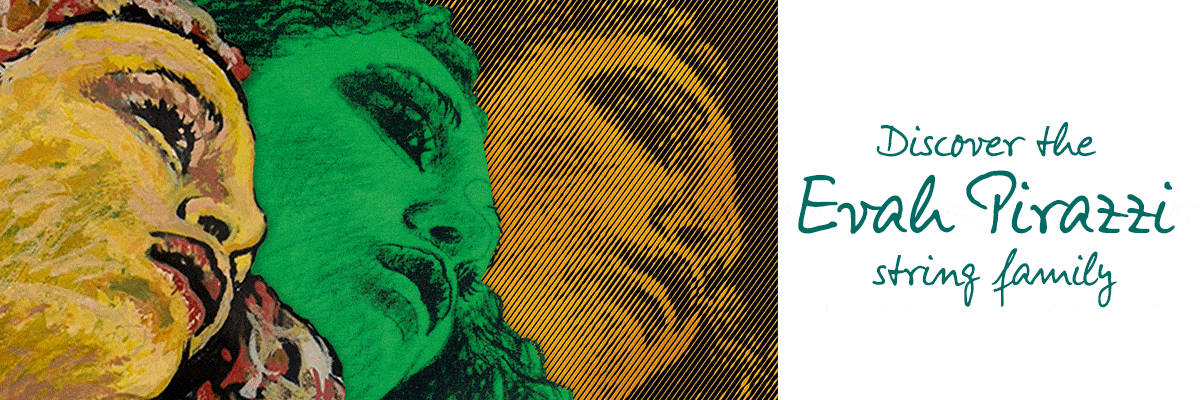
February 2013
V.com weekend vote: Has studying an instrument made you more intelligent?
February 23, 2013 13:45As musicians and music lovers, many of us probably take for granted the notion that music increases our intelligence.
So imagine my surprise, reading this article in the Telegraph, which says, "Pushy parents who give their children piano lessons because they believe it will make them more intelligent are wasting their money, experts claim." Basically the article claims that it's all a spurious correlation: smart, rich kids study music, so we think that music makes them smart. I was quite relieved that the British violinist Tasmin Little (who by the way, is currently in the U.S. to play the Elgar Concerto with the St. Louis Symphony next weekend) wrote a very nice response.
I thought I'd poll a bunch of people who have made music a serious pursuit: all of you! Granted this is self-selected and unscientific, but I do think that people who have studied music have some perspective on this topic.
Do you feel that learning an instrument has enhanced your intelligence in any way? And in what way? Do you feel that your intelligence would have grown in the same way without the study of music, or do you think the study of music (and learning an instrument) had some specific effects on you? What were those effects? Please answer the poll question, then share your ideas about this below.
Tweet
V.com weekend vote: Have you tried using digital sheet music (on an iPad or other tablet?)
February 16, 2013 23:17I'm taking a peek at the 21st century: at digital sheet music readers, for iPad and other digital tablets.
The basic idea is that, instead of lugging around books and piles of sheet music, one can easily store and retrieve sheet music in a digital tablet. Want to mark a bowing or fingering in it? Use a stylus. Need to turn the page? Just swipe your finger across the face of the tablet, or touch the right side to go forward, left to go back. Or, get a special pedal and do it hands-free.

Have you ever tried using such a thing? If so, I'd like to mine your brain. If not, I will share what information I gathered from a bit of looking around:
First of all, the use of tablets for reading music is becoming a bit more easy and widespread. For example, apparently the Brussels Philharmonic Orchestra has converted from using sheet music to using tablets, specifically, using Samsung's Galaxy Note 10.1. (No doubt they were much helped by the fact that Samsung donated 100 tablets to the orchestra!) These appear to be larger tablets than say, an iPad, which IMO would make them a bit more readable.
Big performers are appearing on stages more and more with their computer tablets rather than with sheet music, also. A few months ago the Washington Post had an article that talked about pianist Sam Haywood and Jeff Kahane, conductor of the Los Angeles Chamber Orchestra, using digital scores on tablets, aided by a foot pedal called Air Turn, to turn pages.
Some of the most common apps include: ForScore, an application for iPad ($4.99) and MusicReader. For these, one can use PDFs and scanned music. Sheet Music Plus came out with a Sheet Music Plus Digital Reader, which is downloadable for free, but I do believe that you must buy the music from their digital sheet music section, which doesn't include all their titles.
There is more, much more. For example, Tonara can apparently turn pages at the correct time, by listening to you play. And there are many more apps, though a lot seem more directed at guitar players and singers than at classical musicians.
Have you tried using digital sheet music, and what has your experience been? If not, would you be willing to try it?
Tweet
V.com weekend vote: Has your case ever failed you?
February 8, 2013 13:44Has your violin case ever failed you?
I can remember picking out my first violin, as a child: I wanted the one with the pretty case. Of course, the adults around me explained that I shouldn't be influenced by such things: pick the fiddle for the fiddle. And when it comes to cases, I confess: My head is still turned by a pretty case. But I'm wise enough now to know that "protective" beats out "pretty" any time. I'm willing to pay more, to sacrifice aesthetics for protective features, to carry a heavier case, if it protects the fiddle.
I've owned only three primary cases as an adult, mostly because they served me so well: two were American cases from Shar, and the third Musafia. And they were pretty, as well as protective!
These days, one must watch out for pretty (or lightweight) cases that are surprisingly inexpensive. One must make sure that under all that plush velvet, the support system involves something stronger than styrofoam! And it's not just the strength of the shell that matters, either; there is more to consider. I've heard of the shoulder straps that give out after a few months. Those straps are important, for someone carrying around an instrument all the time!
Or there is the case that simply goes to shambles, despite good care.
Also, cases exist with faulty design. For example, one must look at how the case closes. Some cases may be designed in a way that the bow scratches the violin. I've seen a few student cases in which the lid of the case pushes down on the bridge, or even pushes the bridge to the right or left. ("Gee I fix your bridge every single week, what is going on?")
Recently a V.com reader warned about a case in which the red color from the interior fabric bled onto the instrument. I've seen this happen with some very old cases as well, in which the interior was green. A teacher told me that all the backs of the little violins at her school wound up a light green!
Here's another really unexpected one: this image from 2007. Violinist.com member Caeli Smith reported that a dressing-room light burned a hole this high-tech lightweight case, which was brand-new at the time it happened:

The hole left an impression of the light bulb in my brand-new case!
What are your experiences? Has your case ever failed you? I welcome your thoughts about various cases in the comments below.
Tweet
More entries: March 2013 • January 2013
Violinist.com is made possible by...
Dimitri Musafia, Master Maker of Violin and Viola Cases
Johnson String Instrument/Carriage House Violins
Subscribe
Laurie's Books
Discover the best of Violinist.com in these collections of editor Laurie Niles' exclusive interviews.

Violinist.com Interviews Volume 1, with introduction by Hilary Hahn

Violinist.com Interviews Volume 2, with introduction by Rachel Barton Pine






